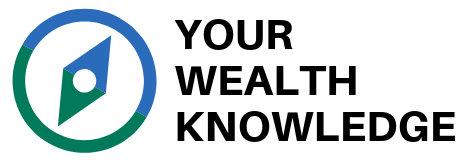You are outta here! Gone is the soul-crushing commute and office politics. You are moving on!
Perhaps this is your last stint in the work world, and you have planned quality time laying around in the backyard. Or perhaps you are moving on to another exciting step in your career.
Before you pack up your desk, here’s a checklist of things to consider. If you are flexible, you may wish to time your exit to optimize all your benefits.
- Annual bonus
- Vesting schedule
- Vested stock options
- Loans from your Retirement plan
- Rollovers
- Required Minimum Distributions (RMDs)—if ≥ age 72
- Health insurance
- Life insurance
The corporate definition of retirement
All companies have their own definition of “retirement”. It’s usually is based on your age and years of service.
- For example, if you are age 65, or at least age 55 with ten or more years of service
This has nothing to do with whether you are really retiring or not. You could “retire” at age 58 and start a new job. Likewise, you could retire to a life of leisure at age 50, but your company will treat you like any other employee that has “separated from service.”
The corporate retirement definition is important as unvested benefits, such as stock grants, may immediately vest upon retirement.
Annual bonus
Does your company award an annual bonus? Find out the cut-off date for earning the bonus (usually the end of December).
If you quit before then do you get a prorated bonus? Or do you need to be there for the entire year?
Likewise, when are the bonuses awarded (eg, the following March)? Do you still need to be there to get it?
Vesting schedules
In order to discourage turnover, many employers will award you compensation benefits on a vesting schedule. If you leave right away, you don’t get the award. But if you stick around for 2-3 years, then it’s yours.
Obviously, this doesn’t apply to your salary or annual bonus, but many of the extra perks, including retirement plans, stock grants, and stock options.
The IRS puts limits on the maximum length of time each of these things can vest, but your employer can always be more generous. For some things there may be no vesting at all.
If you contribute to a 401K or other contributory plan from your own paycheck, that money is always yours.
However, many employers may follow a vesting schedule for their contributions to your plan, including matching funds. If you’ve been at your job for many years, then you are probably fully vested.
If not, check. You may not want to wait around a year, but if you are only a month or so from a significant chunk of change, it may pay to wait.
Again, if your company considers you “retired” then you are fully vested.
If you are being offered your dream job—with generous compensation to match—you may not wish to wait. It will be your call.

Vested stock options
Unvested stock options will go away when you do. But are you holding on to vested stock options hoping the price will go up more?
You may not need to exercise them immediately upon your exit, but there usually is a time limit of 90 days. After that, they go away and you lose any value they may have had.
In most cases, you won’t have enough cash sitting around to purchase your stock with your options. Instead, you’ll do a “cashless” exercise where you borrow the money, use it to purchase the stock at the exercise price, then immediately sell the stock, pocketing the gain.
The financial institution managing your options will do all this for you; you simply get the gain, or the price difference between the stock’s current price, and your exercise price.
This gain will be reported on your W2, and like your paycheck, will be taxed as ordinary income.
Loans from your 401K or another Qualified plan
What happens to that loan when you leave the company? Most plans require that you pay it back, although there is no legal requirement to do so.
You may have a certain amount of time, such as sixty days. Or not. Check with your Plan
If you don’t pay the loan back, it will be considered a distribution. If you are under the age of 59½ you will get hit with a 10% penalty, plus the usual taxes.
A loan offset may give you a bit more time.
You may recall that if you choose to rollover funds from your 401K to an IRA, you have 60 days to deposit the money with your IRA. If you are starting a new job, you may also rollover funds from your old Plan to a new Plan.
When rolling over funds, the amount is reduced by the loan, which is called an offset. However, to avoid a distribution, you are expected to put the full amount back into a retirement account.
The IRS has recently expanded this timeline for offsets: starting in 2018 you have until the due date (including extensions) for your tax return for the tax year when the offset took place, to complete your offset rollover.
- If you leave your company in January of 2019 and initiate a rollover, you have until April 2020 (Or Oct 2020 if you file an extension) to replace the loan amount in your rollover IRA
This IRS guidance applies to loans from any Qualified Plan (such as a 401K), 403b, or government 457b plan.
You don’t need to do an indirect rollover, where your old plan sends you a big check. You can do a direct rollover, either to a new plan or an IRA, and have the funds sent directly, minus the offset.
The only caveat is that you need to deposit your offset amount, or loan amount, into a retirement account by the deadline above, either your new Plan or an IRA.
Rollovers
This isn’t urgent. Even if you leave your job you can keep your savings in your old employer-sponsored retirement plan.
There are many pros and cons to rollovers, which I dive into elsewhere.
In short, keeping your life savings in a 401K, either the one with your old employer or your new employer provides you with extra protection from ERISA, the Employee Retirement Income Security Act (ERISA). Your ex can come after your account, but litigators and creditors cannot.
If you don’t particularly like your old 401K, either because of the limited investment choices or fees, then once you leave your job, you have the option of rolling part or all of it into a rollover IRA at your favorite financial institution.
Doing a direct rollover is the preferred route. After setting up your IRA account at the new place, call up the custodian of your old 401K and request a rollover. They will send a check to your new account.
If you need emergency cash, and you’ve depleted your usual emergency fund, you can pull your contributions from a Roth IRA. They come out first and are free of both penalties and taxes. This is only in a true emergency. Unlike the loan option above, you can’t put the money back.
You can’t do this with a Roth account within a 401K, so you may wish to keep some of your Roth money in an IRA.
If you have a Health Savings Account, or HSA, don’t forget that it can be rolled over as well. Look for a financial institution with good investment choices and low fees.

Photo by Rodolfo Clix from Pexels
Age 72 and Required Minimum Distributions (RMDs)
Perhaps you’ve been putting off retirement for quite some time.
Once you hit age 72 you are required to take minimum distributions, or withdrawals, from your tax-advantaged accounts. This includes 401Ks, profit-sharing, 403b, or other defined contribution plans. IRAs are also included, including SEP-IRAs and SIMPLE-IRAs.
There are exceptions. If you are still working at age 72 you are NOT required to take RMDs from the retirement plan with your current employer.
However, any “old” plan you have is still subject to RMDs.
This is one reason it is recommended that when you change jobs you rollover funds from your old 401K to your new 401K.
So, if you are now leaving the workforce permanently, depending on your age, you may need to start RMDs.
The other exceptions to the RMD rule are Roth IRAs and HSAs. (Note that Roth Accounts, or Roth money still held in a 401K or similar, may be subject to RMDs.)
Health insurance—COBRA
If you are starting a new job with healthcare coverage this won’t be an issue. Likewise, if you are 65 or over you have Medicare (see below).
But if you are retiring early or taking a break, then healthcare coverage is a must.
If you had health insurance through your previous employer (of 20 or more employees) then they are required to offer you COBRA, named after the Consolidated Omnibus Budget Reconciliation Act.
If you choose COBRA, you may continue your previous health coverage for up to 18 months. (Up to 36 months for dependent children, and other situations such as death or divorce.)
Unlike when you were working, you are now responsible for the full premium, which may not exceed 102% of the cost of the plan.
Because you are extending your previous coverage you get to keep your preferred in-network doctors that you used while you were working.
Health insurance—Health Insurance Marketplace
COBRA can be pricey, so you may wish to shop around.
As a result of the Affordable Care Act (“Obamacare”) healthcare coverage is available to purchase through exchanges. States that participate have their own exchanges (eg, Covered California). If not, use the federal exchange at HealthCare.gov.
There are generally three levels of coverage, which should make comparison shopping between different insurance providers a bit easier. The lowest is “bronze”, which has the lowest premiums but highest deductibles, followed by “silver”, then “gold”, and at the top, “platinum”.
If you are very healthy, bronze may be fine. Otherwise, most of us will probably go with silver.
Most healthcare insurance providers have additional plans that may not be listed in the exchanges. Also check provider websites (eg, Blue Shield).
When comparing plans also check whether your favorite doctors are in their networks. If you have a longstanding relationship with a particular doctor, you may wish to pay a bit more to continue to see them. This is something you’ll need to decide for yourself.
Most of the time you can only change your healthcare coverage during an open enrollment period. For the Health Insurance Marketplace, that enrollment period is October 15th – January 15th.
An exception to the open enrollment period is if you’ve left your job and lost health coverage as a result. You will, however, need to show proof of prior insurance.

Photo by duncan adler on Unsplash
Health insurance—Medicare
Those of us, age 65 and above are eligible for Medicare. If you start social security before age 65 you will be automatically enrolled.
Otherwise, you are required to enroll during a period that extends from three months before the month you turn 65, up to three months after. If you miss this seven-month window you will pay a penalty when you finally enroll.
With the penalty, you are effectively paying a premium for something that should be free. Fortunately, unlike Part B and Part D penalties that last the rest of your life, Part A penalties are paid only for a limited time.
What if you’re still working at age 65? Medicare Part A, which covers hospital stays, doesn’t cost you anything. Go ahead and enroll. It will be secondary to your employer-sponsored insurance.
If you are still covered by employer-sponsored health insurance—either your own or your spouse’s—you are not required to enroll in Medicare Part B, C, or D.
Part B
Once you lose your employer-sponsored health coverage, you have up to eight months to enroll in Medicare Part B, which covers doctors’ visits and outpatient procedures.
If you miss this deadline you will pay a penalty in the form of a higher premium, that you will pay for the rest of your life.
Part D
Medicare Part D covers prescription drugs. You must be enrolled in Part A and Part B before enrolling in part D.
Like other Medicare coverage, don’t delay. If you go without creditable prescription drug coverage for 63 days or more in a row, you could pay a penalty for Part D in the form of a higher premium. Again, a higher premium which you will be paying forever.
Creditable prescription drug coverage is defined as coverage at least as good as Part D and may be provided by your employer, COBRA, a plan from the Marketplace, another Part D plan, or Medicare Advantage.
Medicare Advantage
Medicare Part C, or Medicare Advantage, is a health insurance plan administered by a third-party health insurance provider. It more closely resembles the insurance you have now and is available as either an HMO or PPO model.
It should have broader coverage than original Medicare. It includes Part A, Part B, plus additional coverage such as prescription drugs, and sometimes dental or vision.
If you plan to travel extensively overseas during your early retirement, keep in mind that original Medicare will not cover your expenses outside the US. Medicare Advantage may, depending on the plan.
In general, Medicare Advantage should cost less than Part B + Part D + Medigap. However, out-of-pocket costs may be higher, and your pool of in-network doctors may be more limited.
Rules for enrolling in Medicare Advantage are the same as those for Part B. If you are working, you can delay enrollment. However, you must first enroll in Part A and Part B before enrolling in Medicare Advantage.
You can always leave Medicare Advantage and go back to original Medicare coverage. (During the appropriate open enrollment window every year.)
Be aware that your Medicare Advantage plan may disenroll you if they cover prescription drugs and you unknowingly sign up for Part D.
Medicare Advantage shouldn’t be confused with Medigap insurance, also called Medicare supplemental insurance. Medigap doesn’t work with Medicare Advantage. Instead, it is intended to broaden the coverage of original Medicare. Some of these plans also cover prescription drugs, so Part D may not be necessary.
Confused? Here’s a handy brochure from Medicare.gov.

Photo by Rafael Lopes de Lima on Unsplash
Medicare + COBRA
You may have both Medicare and COBRA, but it depends on what you have first.
- COBRA first. If you become eligible for Medicare while on COBRA, usually, the COBRA coverage ends. You may be able to keep it for other coverage, such as dental or eye. Any family member can keep it for up to 36 months.
- Medicare first. You may enroll in COBRA, but it will be secondary to your Medicare coverage. In most cases, you won’t wish to spend the extra premium, but its an option if you have high medical expenses with substantial out-of-pocket costs.
Life insurance
You may have had a group term life insurance policy with your company. $50,000 is a common amount, which is the top limit without income tax consequences.
Once you leave your company that insurance policy goes away. If allowed, you may be able to transfer that policy to an individual policy.
Otherwise, you’ll need to purchase an individual policy on your own, which may require that you satisfy health or other requirements.
Group life insurance through your employer is usually term life insurance or insurance that is only valid during the “term” or years specified in the insurance contract. In this case, the term is your tenure at this employer.
When purchasing life insurance on your own you have a choice between several different types of policies. Term insurance is usually the most cost-effective and is good for younger families.
Whole life is intended to be kept for a long period, such as your entire life. Premiums are higher than term but stay level as long as your policy remains in force. As a result, you effectively overpay when you are young (and statistically less likely to die) and underpay when you’re older.
Whole life policies also come with a cash value that grows over time, albeit at a very low interest rate. Depending on the policy, in later years this cash value may be used to pay premiums, or simply surrendered for cash.
If life insurance is important for the protection of your family, then its best to establish an individual policy outside of your employer and do so when you are young and healthy.
Additional Reading
Rollover Revisited: Why Sticking With a 401K May Be Better. Should you rollover your retirement savings to a new employer’s 401K or a rollover IRA?
Will Social Security Still Be There When We Need It? Most likely
This information has been provided for educational purposes only and should not be considered financial advice. Any opinions expressed are my own and may not be appropriate in all cases. All efforts have been made to provide accurate information; however, mistakes happen, and laws change; information may not be accurate at the time you read this. Links are included for reference but should not be considered an implied endorsement of these organizations or their products. Please seek out a licensed professional for current advice specific to your situation.

Liz Baker, PhD
I’m an authority on investing, retirement, and taxes. I love research and applying it to real-world problems. Together, let’s find our paths to financial freedom.



